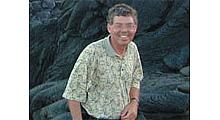FCC Unveils Updated TVStudy Software

Doug Lung
On Monday the FCC released a Public Notice (DA 13-1613) announcing a new version of the TVStudy software created by the Office of Engineering and Technology (OET) as well as several files that show how the repacking would be accomplished if the proposals are adopted. I'm still reviewing the data and haven't had a chance to install and test the new TVStudy, but based on the files provided I think the release is generally good news for broadcasters. (I reserve the right to change my opinion after I've had an opportunity to study it in more detail.)
TVStudy is the software the FCC proposes to use in connection with the planned repacking following the incentive auction. While it’s based on the same OET-69 code currently used to analyze TV stations' coverage and interference, some of the input parameters have been changed--among them use of 2010 census data and proposed use of the correct depression angle from the antenna after adjusting the elevation angle for beam tilt. Use of the actual elevation pattern (if available) to determine the protected contour is also proposed. This would more accurately model interference from a station where beam tilt was used specifically to avoid interference to one or more stations. If the actual elevation pattern was not used in calculating contour and coverage, that station would appear to create more interference to other stations than actually exists. This could possibly result in these stations receiving significantly more actual interference in a repacking than they‘re receiving now.
One of the concepts presented in the announcements is the use of a domain file, which lists potential channels available to a station after land mobile allocations and Canadian and Mexican border stations are considered, along with an “interference_paired” file. This “interference_paired” file uses proxy channels to determine what stations can share the same channel or upper or lower adjacent channels. Together they establish the constraints on the channels that can be assigned to a group of stations.
The example studies released with the Public Notice assume the FCC will adopt “Option 2” for protection of stations' coverage. Option 2 protects existing viewers (those currently predicted to receive a signal from a station without interference) reception by cell and for this study no more than 0.5 percent additional interference was allowed.
For the example studies the FCC did not change any station's transmitter location. At first glance this seems to be best scenario that broadcasters could hope for. If I understand the document, the impact on existing viewers would be minimal as the existing coverage areas will be protected and the allowable interference criteria are the same as that currently existing. Of course, as the Public Notice and FCC staff are careful to point out at every opportunity, the assumptions and parameters in the data released “are for illustrative purposes only and necessarily reflect certain assumptions that are subject to a final decision by the Commission.” The parameters and assumptions could be changed to try to squeeze out more spectrum and cause significant harm to off-air TV reception.
The difficulty that the FCC is likely to face in border areas become becomes evident when looking at the Domain_2013July15.csv file [right click to download as a text file] available on the Constraint Files for Repacking website. For example, in some cases along the New York/Canadian border, the only channels available are the ones currently in use. Some of these are higher frequency UHF channels that the FCC is going to want to reallocate. The use of the domain file to restrict repacking opportunities should help provide some certainty to these stations until new channels can be coordinated with Canada. The Technical Appendix: Constraint Files Generation explains how the domain and “interference_paired” files are generated and provides maps illustrating the process. Overall, I'm very impressed with the job OET has done on this. I'm starting to see how this plan could work, although without more analysis and a better idea how many stations will be participating in the incentive auction, it's impossible to predict how much spectrum will actually be available for auction and what the worst case scenario for the remaining TV broadcaster might look like. While I'm sure there are areas in which broadcasters would like to see additional protections, to me this looks a pretty good starting point.
Look for a more detailed analysis in my Sept. RF Technology column in TV Technology magazine.
Get the TV Tech Newsletter
The professional video industry's #1 source for news, trends and product and tech information. Sign up below.
Doug Lung is one of America's foremost authorities on broadcast RF technology. As vice president of Broadcast Technology for NBCUniversal Local, H. Douglas Lung leads NBC and Telemundo-owned stations’ RF and transmission affairs, including microwave, radars, satellite uplinks, and FCC technical filings. Beginning his career in 1976 at KSCI in Los Angeles, Lung has nearly 50 years of experience in broadcast television engineering. Beginning in 1985, he led the engineering department for what was to become the Telemundo network and station group, assisting in the design, construction and installation of the company’s broadcast and cable facilities. Other projects include work on the launch of Hawaii’s first UHF TV station, the rollout and testing of the ATSC mobile-handheld standard, and software development related to the incentive auction TV spectrum repack.
A longtime columnist for TV Technology, Doug is also a regular contributor to IEEE Broadcast Technology. He is the recipient of the 2023 NAB Television Engineering Award. He also received a Tech Leadership Award from TV Tech publisher Future plc in 2021 and is a member of the IEEE Broadcast Technology Society and the Society of Broadcast Engineers.

